If you’re a proud owner of a beautiful Monstera plant, you know that finding the right pot is just as important as watering and pruning. Choosing the best pots for Monstera plants can be overwhelming, with a plethora of options available in the market. But don’t worry, we’ve got you covered! In this article, we’ll guide you through the process of selecting the perfect pot to keep your Monstera healthy and thriving.
Tropical plants like Monstera are popular among indoor gardeners due to their striking foliage and air-purifying properties. However, to help your Monstera grow to its full potential, it’s crucial to select the right pot that provides proper drainage, aeration, and sufficient space for the roots to grow. With so many pots on the market, it can be challenging to find the right one for your Monstera. But don’t worry, we’ve done the research for you and rounded up some of the best pots for Monstera plants to make your decision-making process a little easier. So, let’s dive in!
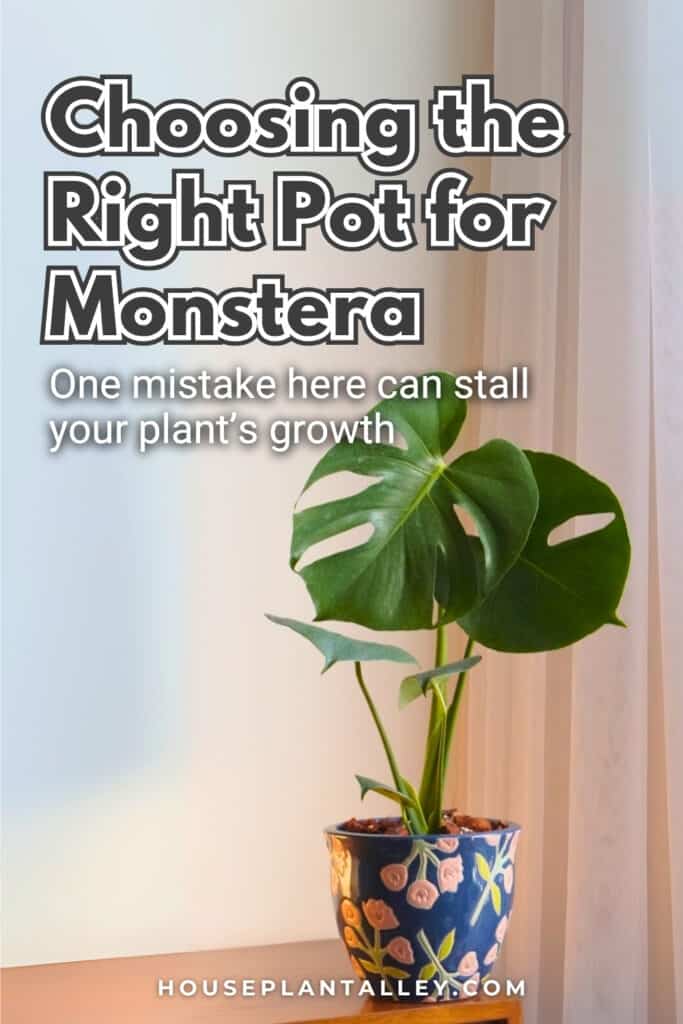
Contents
5 Key Features of a Monstera Plant Pot
To keep your Monstera thriving, it is important to choose the right pot. In this section, we will discuss the five key features of a pot for Monstera plants that you should consider before making a purchase.
1. Drainage
Drainage is crucial for Monstera plants because they are sensitive to overwatering, which can lead to root rot. A pot with drainage holes will allow excess water to escape, preventing water from accumulating in the bottom of the pot. When choosing a pot for your Monstera, make sure it has adequate drainage holes to ensure proper water flow.
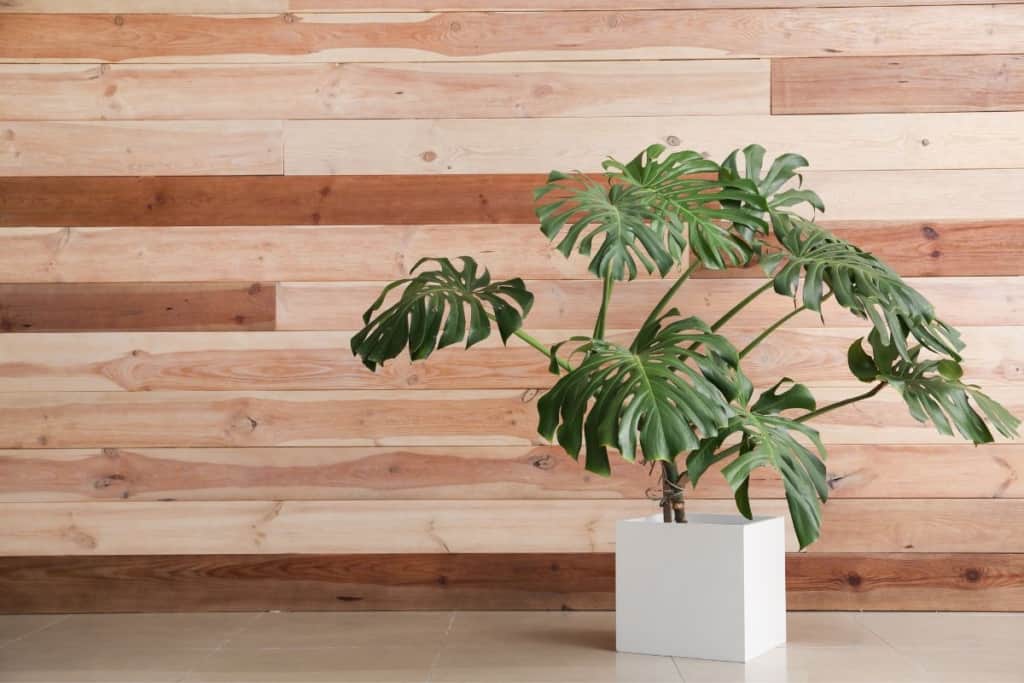
2. Material
The material of the pot can also impact the health of your Monstera. Terra cotta and clay pots are porous, which allows for air and moisture exchange, promoting healthy root growth. However, these pots can also dry out quickly, which may require more frequent watering. On the other hand, plastic and glazed ceramic pots hold moisture better, but they may not provide enough aeration. Consider the pros and cons of each material before making a choice.
3. Size
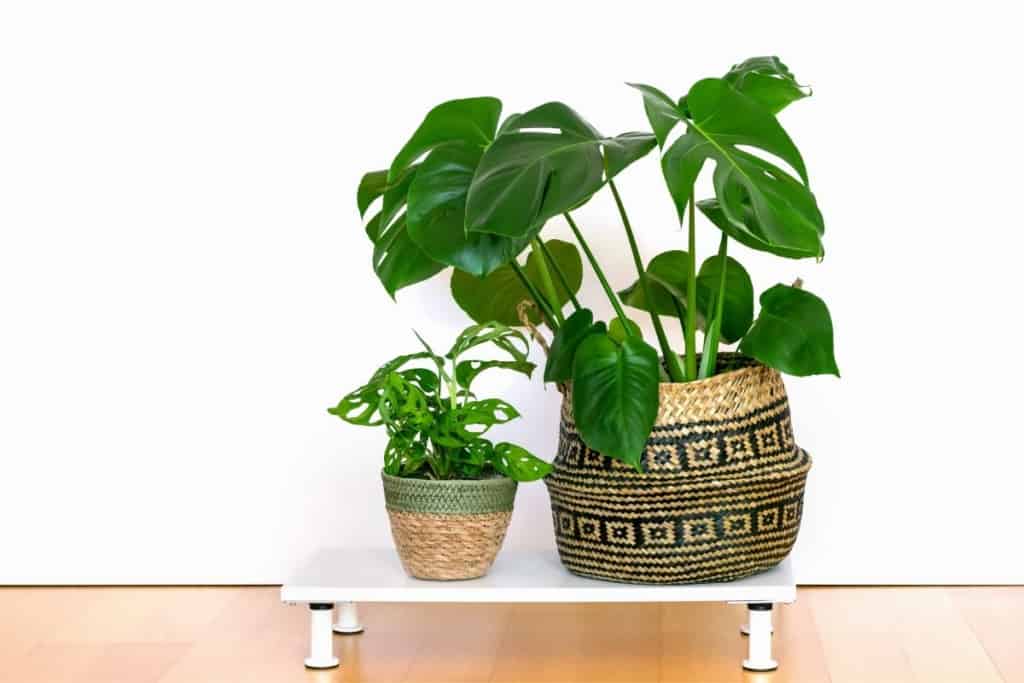
The size of the pot is also important for the health of your Monstera. A pot that is too small may constrict the root growth, leading to a smaller plant or even root-bound conditions. A pot that is too large, on the other hand, can lead to overwatering, as the excess soil will retain more moisture. Choose a pot that is just slightly larger than the root ball of your Monstera.
4. Stability
Monstera plants can grow quite large, and their leaves can become heavy, so it is important to choose a pot that is stable and won’t tip over. Look for pots with a wide base or a heavier material to ensure stability.
5. Appearance
Finally, consider the appearance of the pot. A Monstera is a statement plant, so you want a pot that complements its unique beauty. Choose a pot that not only matches your aesthetic preferences but also fits well with the style of your home.
Choosing the Right Material for Your Monstera Pot
When it comes to choosing a pot for your monstera, the material is a crucial factor to consider. There are several materials available, each with its own advantages and disadvantages. Here are some of the most popular materials and what you need to know about each of them.
Clay/Ceramic
Clay or ceramic pots are a popular choice for monstera plants. They are porous and allow air to circulate around the root ball, which helps prevent overwatering. Additionally, the weight of the pot provides stability, which can prevent the plant from toppling over. However, clay pots can be fragile and prone to cracking, and they can also be heavy, making them difficult to move.
Plastic
Plastic pots are lightweight and affordable, making them a popular choice for many indoor plants, including monstera. They are also durable and easy to clean. However, plastic pots are not as breathable as clay pots, and can trap excess moisture around the roots, leading to overwatering.
Terracotta
Terracotta pots are made from clay that is fired at high temperatures, making them porous and breathable. They are a popular choice for monstera plants because they allow excess moisture to evaporate from the soil, helping to prevent overwatering. However, like clay pots, terracotta pots can be heavy and prone to cracking.
Ultimately, the best material for your monstera pot will depend on your watering habits and specific needs. Consider the pros and cons of each material before making your choice.
Best Pots for Monstera Plants
For Small Spaces
When it comes to small spaces, you may want to choose a smaller pot to ensure your Monstera doesn’t take over your entire living area. Look for a pot with a smaller diameter that will allow for proper drainage and provide enough space for the roots to grow.
For Large Monstera Plants
For large Monstera plants like the Monstera deliciosa, you’ll want a pot that can accommodate their size and support their weight. A heavy and sturdy pot made from materials like terracotta, concrete, or ceramic will provide the necessary stability for large Monstera deliciosa plants. Look for a pot with a wide base and a deeper profile to give the roots plenty of room to grow.
Related Post:
How Fast Do Monstera Grow?
For Climbing Monstera Plants
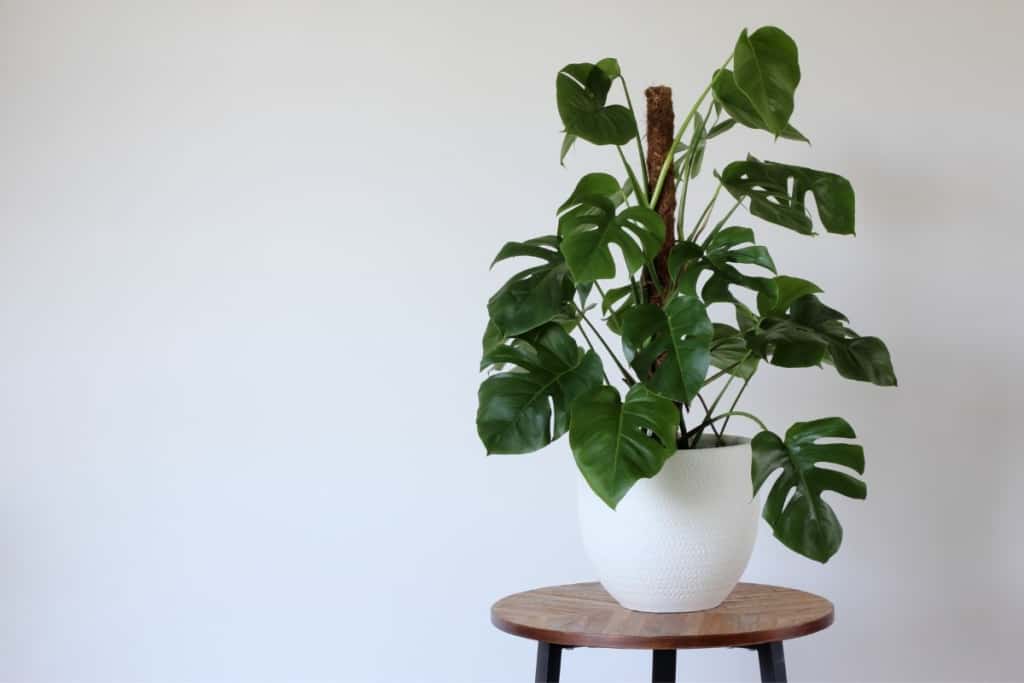
Climbing Monstera plants require a pot that allows for vertical growth. Look for a tall and narrow pot with ample drainage holes that can support a trellis or stake. You can also opt for a moss pole or a wooden stake to support your plant’s aerial roots.
Related Post:
How To Grow Monstera Upwards
For Outdoor Monstera Plants
When it comes to outdoor use, you’ll want a pot that can withstand the elements. Look for pots made from durable materials like ceramic, concrete, or terracotta that can handle exposure to the sun, wind, and rain. Ensure the pot has a drainage hole to avoid waterlogging and root rot.
For Humid Environments
Monstera plants thrive in humid environments but hate overwatering, so you’ll want to choose a pot that can wick off moisture. Look for pots made from porous materials like terracotta or unglazed ceramic. These materials allow for better aeration and moisture retention, which is ideal for Monstera plants in humid environments.
For Dry Environments
In dry environments, you’ll want a pot that can retain moisture and prevent water evaporation. Look for pots made from materials like glazed ceramic or plastic, which can help retain moisture. Additionally, you can use a moisture-retaining potting mix and a pebble tray to keep the humidity level stable.
Finding the Right Pot Size for Your Monstera
Choosing the right pot size for your monstera is crucial for its growth and development. The size of the pot you choose can have a significant impact on the plant’s root system, which in turn affects its overall health and growth. A pot that is too small can cause stunted growth of your monstera, while a pot that is too big can lead to overwatering and root rot.
To determine the right pot size for your monstera, you should consider its current size and the amount of space it needs to grow. Monstera plants are known for their rapid growth, so it is essential to choose a pot that can accommodate this growth. As a general rule, you should choose a pot that is one size larger than the current pot the plant is in. This will provide enough space for the roots to grow and ensure that the plant has enough room to develop.
In addition to the size of the pot, you should also consider the depth of the pot. If you are using a moss pole to support your climbing Monstera, it’s recommended to use a deep pot to provide ample space for the roots to grow and anchor the plant as it climbs.
Also, Monstera plants have deep root systems, so it is essential to choose a pot that is deep enough to accommodate these roots. The depth of the pot should be at least 2-3 inches more than the length of the plant’s root system. This will ensure that the roots have enough space to spread out and grow. By choosing the right pot size and depth, you can help your monstera plant thrive and grow into a beautiful, healthy specimen.
Potting Pitfalls: Avoid These Types of Pots for Your Monstera
While there are many great pot options for your Monstera, there are also some pots that you should avoid. One such type of pot is a glass container. Glass containers may look attractive, but they don’t offer the proper drainage that your Monstera needs. Without proper drainage, your plant’s roots can become waterlogged, leading to root rot and eventually killing your Monstera.
Another type of pot to avoid is a pot with a built-in saucer. While these pots may seem like a convenient option, the built-in saucer can trap water, which can cause root rot. Instead, opt for a pot with a separate saucer that allows excess water to drain away from the roots.
Self-watering pots are also not recommended for Monstera plants because they can easily lead to overwatering and root rot. While these pots can be useful for other types of plants that love moist soil, they are not suitable for Monsteras. The way self-watering pots work is that they have a water reservoir that provides a continuous source of moisture for the plant. While this may seem like a great idea, it can lead to problems with Monstera plants, which prefer drier soil.
Related Post:
43 Different Types Of Monstera (With Pictures)
Using Cachepots for Monstera Plants
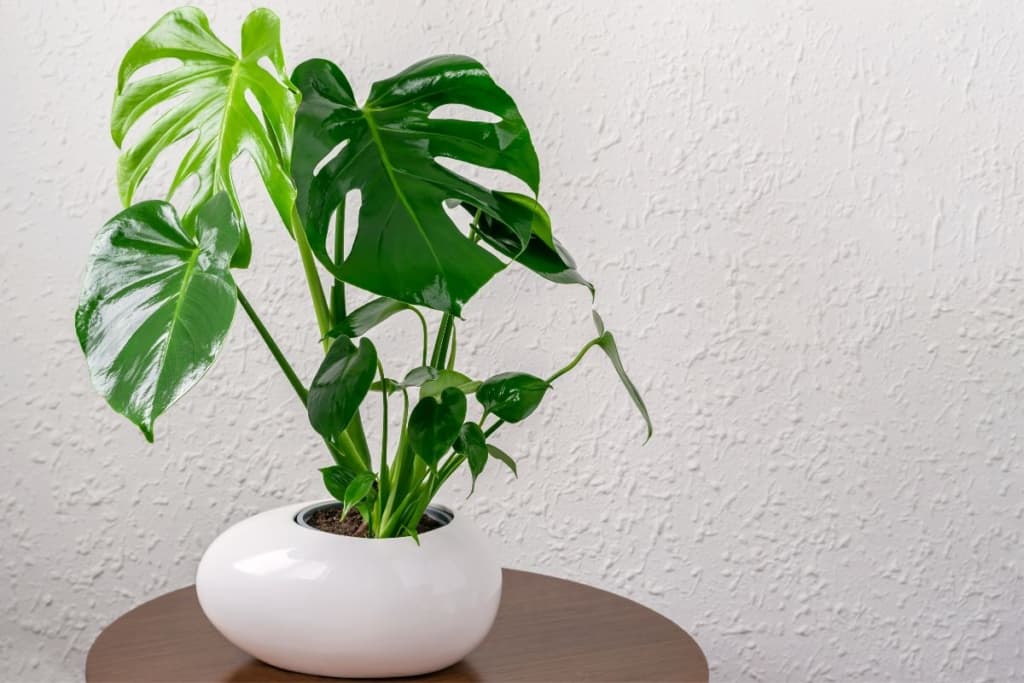
Cachepots, also known as decorative outer pots, can be a great option for monstera plants. These pots are designed to hold a plastic nursery pot inside, making it easy to switch out plants without having to repot them each time. Cachepots come in a variety of styles, materials and sizes, allowing you to choose one that complements your home decor.
One of the benefits of using a cachepot for your monstera is that it can help with drainage. Since the nursery pot sits inside the cachepot, any excess water can drain into the bottom of the cachepot, preventing root rot and other moisture-related issues. Additionally, cachepots can help to insulate the plant and protect it from sudden temperature changes or drafts.
When using a cachepot for your monstera, make sure that the nursery pot has proper drainage holes and that any excess water can easily escape. It’s also important to choose a cachepot that is large enough to accommodate the nursery pot and the plant, but not so large that the plant becomes overwhelmed. Overall, cachepots can be a stylish and functional way to display your monstera plant.
Conclusion
In conclusion, selecting the best pots for monstera plants is crucial for their growth and overall health. By considering factors such as drainage, material, size, stability, and appearance, you can ensure that your monstera is thriving in its new home. Whether you have a small or large space, a climbing or non-climbing monstera, or a humid or dry environment, there is a perfect pot out there for your plant.
Remember to avoid using pots that are too big or small, self-watering pots, and pots without a drainage hole. By choosing the right pot for your monstera, you’ll be creating a comfortable environment that will help your plant thrive. So, whether you’re a seasoned plant enthusiast or a beginner looking to add some greenery to your space, take the time to find the best pot for your monstera plant and enjoy watching it grow and flourish.
